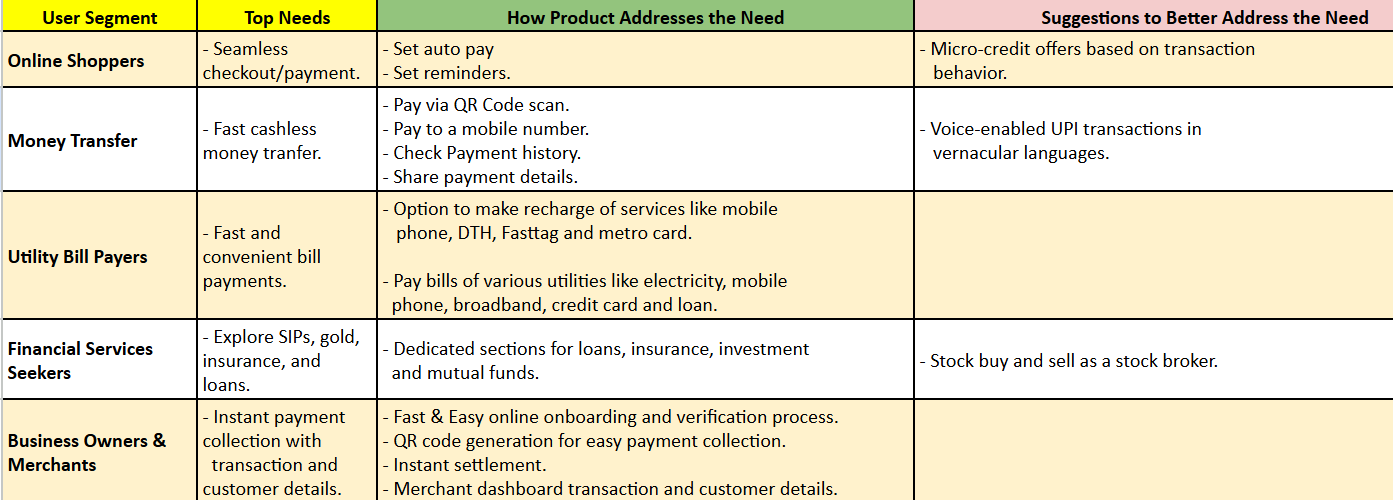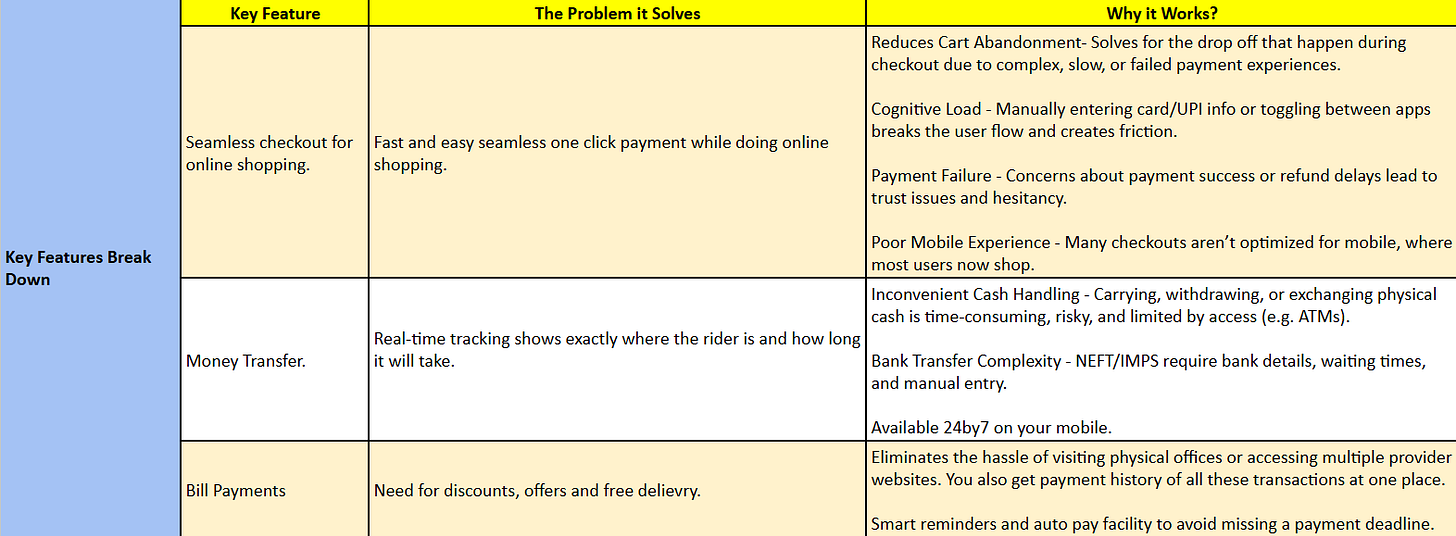Product deconstruction involves analyzing an existing product, such as an app, website, or feature, to understand its target users, the value it provides, the reasoning behind its design, and how effectively it addresses user needs.
It helps build a strong product sense, which is the ability to identify real user problems, design intuitive solutions, and make smart trade-offs that balance user needs, business goals, and technical feasibility.
Below is one of the structured approaches one may use to deconstruct a product.
The example taken is PhonePe, a leading Indian digital payments and financial services platform that enables users to make seamless payments, transfer money, and manage their finances all through a single mobile app. Launched in 2016, PhonePe is built on the Unified Payments Interface (UPI) and has grown to become one of India’s most trusted and widely used fintech apps, with over 500 million registered users.
Step 1 - Define the user segments, their needs or use cases, and how the product solves them.
Step 2 - Break down the top 3 features, the problem solved, and why it works.
Step 3 - Do competitive analysis.
Step 4 - Identify the Opportunities or Suggested Improvements.
International Remittance - Enable cross-border remittance from NRIs to Indian users via UPI.
Voice-Enabled Actions - Enable UPI and bill payment using voice commands in Indian languages.
Insurance Growth - Expand into bite-sized insurance (e.g., dengue, travel, rental, school fees insurance).
Credit & Lending - Offer context-aware micro-credit or BNPL (Buy Now Pay Later).





